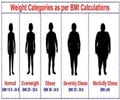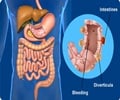A study by University of Gothenburg, analyzing data on almost 1.7 million men in Sweden demonstrated that severe obesity at age 18 can be associated with atrial fibrillation
- A most common type of heart arrhythmia is Atrial fibrillation
- Arrhythmia is when the heart beats in an irregular way, too slowly or too fast
- According to a study, obesity in adolescents was strongly associated with early atrial fibrillation
Interaction of obesity and atrial fibrillation: an overview of pathophysiology and clinical management
Go to source). Growing obesity prevalence imposes a significant strain on the health care system and has growing socioeconomic implications. Obesity is well known to raise mortality and morbidity on an individual level. Obesity is a major cardiovascular risk factor that also raises the risk of atrial fibrillation and sudden cardiac death. According to studies, both the increased adiposity itself and the metabolic effects of weight gain help create an abnormal arrhythmogenic substrate (2✔ ✔Trusted Source
The Implications of Obesity for Cardiac Arrhythmia Mechanisms and Management
Go to source). The most prevalent arrhythmia in the world is atrial fibrillation (AF) and significantly increases morbidity and mortality. Over the coming decades, it is also anticipated that both the incidence and prevalence of AF would rise in and around the world. Numerous modifiable and non-modifiable risk factors for the development of AF have been identified, despite the fact that the pathophysiology relating to its development is not fully understood (3✔ ✔Trusted Source
Lifestyle Modification in the Prevention and Treatment of Atrial Fibrillation
Go to source).
In developed and developing countries, obesity is at epidemic proportions. Obesity is becoming more common among people of all ages, but it is particularly prevalent in kids and teenagers. Obesity is a major cause of increased morbidity and death, especially from cardiovascular disease (CVD) and diabetes as also from cancer, chronic diseases like osteoarthritis, liver and renal disease, sleep apnea, and depression. Over the past five decades, the prevalence of obesity has continuously increased, and it may significantly reduce quality-adjusted life years. Additionally, obesity is closely linked to a higher risk of death from all causes, including cardiovascular disease and cancer (4✔ ✔Trusted Source
The Medical Risks of Obesity
Go to source).
Read More..
Pathophysiology Behind Obesity and Atrial Fibrillation
Obesity alters the architecture and physiology of the heart by changing hemodynamics. It is linked to a number of systemic conditions that can raise the risk of atrial fibrillation, including metabolic syndrome, hypertension, diabetes, obesity hypoventilation syndrome, obstructive sleep apnea (OSA), and dyslipidemia. Obesity results in a high output condition because of an increase in total blood volume, which raises filling pressures and cardiac output, causing the left ventricle to enlarge. Right ventricular hypertrophy can be caused by obesity hypoventilation syndrome and OSA, which can also raise pulmonary artery pressures. Concentric hypertrophy and left ventricular diastolic dysfunction are brought on by this, together with hypertension, and finally result in systolic dysfunction.This results in an abnormally high left atrium pressure, thickening of the left atrial wall, expansion of the left atrium, and insufficient left atrial volume and ultimately atrial fibrillation (5✔ ✔Trusted Source
Obesity and Atrial Fibrillation: A Narrative Review
Go to source).
Details of the Study
The study, which was published in the Journal of the American Heart Association, is based on an examination of national registration information on 1,704,467 males who enrolled in the Swedish military between 1969 and 2005. The typical enrollment age was 18 years old.Height, weight, blood pressure, level of fitness, and muscle strength were among the enrolment information. The researchers were then in a position to ascertain the prevalence of atrial fibrillation and monitor the results using information on inpatient care and from cause-of-death records.
The study, which was published in the Journal of the American Heart Association, is based on an examination of national registration information on 1,704,467 males who enrolled in the Swedish military between 1969 and 2005. The typical enrollment age was 18 years old. Height, weight, blood pressure, level of fitness, and muscle strength were among the enrolment information. The researchers were then in a position to ascertain the prevalence of atrial fibrillation and monitor the results using information on inpatient care and from cause-of-death records.
An irregular and frequently rapid heartbeat that occasionally includes the heart's inability to properly circulate blood throughout the body are the markers of atrial fibrillation. The severity of the symptoms varies, and the illness may be persistent or comprise isolated attacks. Hospitalization is usually necessary.
36,693 cases of atrial fibrillation were recorded over a median follow-up duration of 32 years. The average age of diagnosis for the entire sample of individuals was 52.4 years.
When males enlisted in the military at what is typically considered a low normal weight, the risk of developing atrial fibrillation increased. This risk increased with rising body mass index (BMI). A BMI of 35 or above at enrollment increased the incidence of atrial fibrillation in early middle age by three to four times for men. The average age upon diagnosis in this instance was 43.4 years. The risk of mortality, regardless of cause, as well as the chances of heart failure and ischemic stroke were all significantly correlated with BMI at enrollment.
The study found that adolescents with greater than normal BMI had a strong association with early atrial fibrillation and poor clinical outcomes. Long-term exposure to overweight and obesity was linked to a higher risk of death, heart failure, and ischemic stroke in those with atrial fibrillation (6✔ ✔Trusted Source
Body Mass Index in Adolescence and Longâ€Term Risk of Early Incident Atrial Fibrillation and Subsequent Mortality, Heart Failure, and Ischemic Stroke
Go to source).
Symptoms and Treatment of Atrial Fibrillation
Patients having atrial fibrillation can present mild or even no symptoms. It can be in patients with other conditions such as congestive heart failure, myocardial infarction, stroke, or shock (5✔ ✔Trusted SourceObesity and Atrial Fibrillation: A Narrative Review
Go to source).
Treatment includes modification of lifestyle, management of risk factor, weight loss, rhythm control and anticoagulants. Studies have shown the positive effect of weight loss and risk factor management on atrial fibrillation progression and recurrence (5✔ ✔Trusted Source
Obesity and Atrial Fibrillation: A Narrative Review
Go to source).
References:
- Interaction of obesity and atrial fibrillation: an overview of pathophysiology and clinical management - (https://www.tandfonline.com/doi/abs/10.1080/14779072.2019.1581064)
- The Implications of Obesity for Cardiac Arrhythmia Mechanisms and Management - (https://www.sciencedirect.com/science/article/abs/pii/S0828282X14014974)
- Lifestyle Modification in the Prevention and Treatment of Atrial Fibrillation - (https://www.sciencedirect.com/science/article/abs/pii/S003306201500050X)
- The Medical Risks of Obesity - (https://www.tandfonline.com/doi/abs/10.3810/pgm.2009.11.2074)
- Obesity and Atrial Fibrillation: A Narrative Review - (https://www.cureus.com/articles/116211-obesity-and-atrial-fibrillation-a-narrative-review)
- Body Mass Index in Adolescence and Long‐Term Risk of Early Incident Atrial Fibrillation and Subsequent Mortality, Heart Failure, and Ischemic Stroke - (https://www.ahajournals.org/doi/10.1161/JAHA.121.025984)
Source-Medindia
















